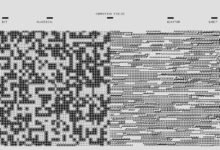Learn All About PlugboxLinux

PlugboxLinux was a specialized Linux distribution based on Arch Linux, created to support ARM architecture devices. It was particularly known for its use in plug computers such as the SheevaPlug and GuruPlug, which are small, low-power devices intended for always-on computing tasks about PlugboxLinux. PlugboxLinux about focused on providing a lightweight, flexible, and minimal operating system that could be easily customized to meet the needs of developers and embedded system enthusiasts.
Contact PlugboxLinux
Since the original PlugboxLinux project has been succeeded by Arch Linux ARM, there is no active support or direct contact PlugboxLinux. However, the community and resources for its successor, Arch Linux ARM, provide ample support for users of ARM-based Linux systems. Users seeking assistance, community interaction, or development discussions can utilize the following resources. Here is all details about PlugboxLinux contact :
- Website: Arch Linux ARM
- Forums: Arch Linux ARM Forums
- Mailing Lists: Arch Linux ARM Mailing Lists
- GitHub: Arch Linux ARM GitHub
PlugboxLinux Gaming
While PlugboxLinux gaming was not specifically designed for gaming, its lightweight and customizable nature made it an interesting option for certain gaming applications on ARM devices. The types of gaming experiences feasible on gaming PlugboxLinux were primarily limited by the hardware capabilities of the ARM devices it ran on.
- Retro Gaming: Users could run emulators for retro gaming consoles such as NES, SNES, Sega Genesis, and more. This made it possible to play classic games on low-power ARM devices.
- Indie and Open Source Games: Many lightweight and open-source games that support Linux could be compiled and run on gaming PlugboxLinux. Games developed with an emphasis on minimal resource usage were particularly well-suited for this environment.
- Custom Gaming Projects: Developers and hobbyists could use Plugbox Linux to create custom gaming systems, leveraging its minimal footprint and the flexibility of Linux.
PlugboxLinux Tech
From a technical perspective, PlugboxLinux tech offered several features that made it suitable for use in embedded systems and on ARM devices:
- Minimal Installation: Tech PlugboxLinux provided a basic system upon which users could install only the software they needed, avoiding unnecessary bloat.
- Rolling Release Model: Similar to Arch Linux, Tech PlugboxLinux followed a rolling release model, ensuring users always had access to the latest software updates and security patches without the need for major version upgrades.
- Pacman Package Manager: The package manager, known for its speed and efficiency, was used for installing, updating, and managing software packages.
- Customization: The distribution allowed for a high degree of customization, enabling users to tailor the operating system to their specific requirements.
- Strong Community Support: Users could rely on the extensive documentation and vibrant community support from the broader Arch Linux ecosystem.
Gaming on PlugboxLinux
Gaming PlugboxLinux, while limited by the hardware capabilities of ARM devices, offered several interesting possibilities:
- Retro Game Emulators: A variety of emulators could be installed to play games from older consoles. Popular emulators like RetroArch, SNES9x, and FCEUX were often used for this purpose.
- Lightweight and Indie Games: Games that are less resource-intensive and compatible with ARM architecture could be enjoyed on PlugboxLinux gaming. Titles like “SuperTux,” “Battle for Wesnoth,” and other open-source games were examples of such games.
- DIY Gaming Consoles: Enthusiasts could create their own custom gaming consoles using Plugbox Linux and ARM hardware, such as the Raspberry Pi. This involved configuring the system, installing emulators or games, and setting up custom interfaces.
PlugboxLinux Games
For users interested in gaming, PlugboxLinux games provided a platform that could be expanded with various gaming software:
- Emulators: Supported emulators included those for classic systems like Atari, NES, SNES, Sega Genesis, and more, allowing users to play a wide range of retro games.
- Open Source Games: Numerous open-source games were available in the Arch User Repository (AUR) and could be installed on games PlugboxLinux about. Games like “Nethack,” “Frozen Bubble,” and “Doom” (via source ports like Chocolate Doom) were popular choices.
- Game Development: Developers could use Plugbox Linux as a development environment for creating and testing games on ARM hardware, leveraging the flexibility and power of the Linux ecosystem.
Conclusion
PlugboxLinux provided a robust, minimalistic operating system tailored for ARM devices, but it has since been succeeded by Arch Linux ARM. For users seeking to explore Linux on ARM architecture, Arch Linux ARM continues to offer a powerful and flexible platform with strong community support and extensive documentation.






























































